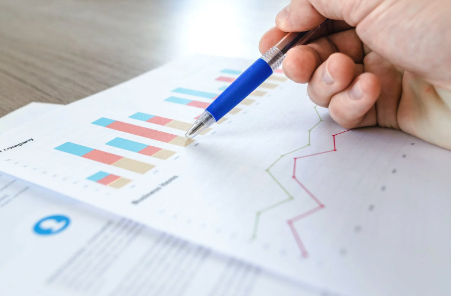Data is the lifeblood of any successful business, as it is the driving force behind critical decision-making, insight generation, and strategic development. However, due to its intricate nature, ensuring the accuracy and reliability of data can often be challenging. This is where the concept of data observability comes into play. In this article, we will delve into the depths of data observability, discussing its definition, importance, and how it can be achieved.
What is Data Observability?
Data observability (DO) is the process of meticulously ensuring data accuracy, reliability, and consistency. This involves the continuous real-time monitoring of data to detect any errors or inconsistencies that may arise, followed by swift action to rectify them. Unlike traditional monitoring, data observability focuses primarily on the quality of the data rather than just its availability. Additionally, by ensuring that data is observable, businesses can gain valuable insights and make informed decisions that are backed by trustworthy and precise data.
Why is Data Observability Important?
Data observability has become a critical aspect of decision-making in today’s data-driven world. The complexity of the data makes it prone to inconsistencies and inaccuracies, which can lead to erroneous conclusions and misguided actions. By ensuring the accuracy and reliability of the data, organizations can build trust with stakeholders and make informed business decisions. Additionally, the practice of data observability can proactively identify potential issues before they escalate into significant problems, thereby saving valuable time and resources in the long term. Overall, DO is an essential tool for modern organizations looking to optimize their decision-making processes and maximize their performance.
Achieving Data Observability
By combining various tools and processes, it is possible to achieve DO. In addition, there are some key steps to achieve DO:
Define Metrics
To achieve DO, start by defining the metrics that you need to monitor. These metrics should also be based on the specific business needs and goals, and they can include data completeness, accuracy, and timeliness, among others.
Monitor Data in Real-Time
Monitor the data in real-time using monitoring tools and dashboards that provide real-time alerts to detect any issues as soon as they arise. These monitoring tools and dashboards can also continuously monitor the data in real-time. This enables the early detection of any issues that may arise. In addition, by using monitoring tools and dashboards, actively monitor the data in real-time to promptly detect and address any issues that may occur.
Conduct Root Cause Analysis
Once you detect an issue, conduct root cause analysis to identify the cause of the issue by analyzing the data and the systems that create it. This involves analyzing the data and the systems that generate it. Identify the root cause to take appropriate steps and fix the issue.
Automate Data Validation
To help ensure that data is accurate and consistent, automating data validation can be a great option. This can also be done through the use of automated testing and validation tools that validate data as it is generated.
Collaborate Across Teams
Data observability requires collaboration across teams, including data scientists, engineers, and business analysts. Each team should be responsible for a specific aspect of DO and work together to ensure that it is accurate, reliable, and consistent. By following these key steps, DO can be achieved successfully.
Conclusion
Ensuring the accuracy and reliability of data is crucial, and data observability plays a significant role in achieving this. It encompasses real-time monitoring of data, detection of potential issues, and implementation of corrective measures. The attainment of DO requires a well-rounded approach involving an array of tools and processes, including metric definition, continuous data monitoring, root cause analysis, automated data validation, and team collaboration. By following these practices, businesses can guarantee that their data is consistent, reliable, and precise, resulting in enhanced business outcomes and decision-making capabilities.
FAQs
What is the difference between data observability and monitoring?
Data observability and monitoring are two crucial practices that organizations must incorporate into their data strategy. However, these terms are often used interchangeably, which can lead to confusion. In essence, the difference between DO and monitoring lies in their primary focus.
DO is primarily concerned with the quality of the data, including its accuracy, completeness, and timeliness. On the other hand, monitoring is focused on ensuring that the data is available when it is needed.
What are some common metrics used in data observability?
To achieve effective data observability, organizations need to track specific metrics. These metrics include data completeness, accuracy, timeliness, and other relevant indicators that measure data quality.
How can data observability help businesses?
Firstly, it enables businesses to make informed decisions based on reliable and accurate data. This, in turn, helps to build trust with stakeholders, including customers and investors. Secondly, data observability enables businesses to identify potential issues before they become significant problems.
How can data observability be integrated into an organization’s data strategy?
Integrating data observability into an organization’s data strategy is crucial from the outset. Organizations should consider it an essential component of data quality and reliability. As such, data observability should be included in all data-related processes and systems to ensure that data quality is continuously monitored and improved.




























